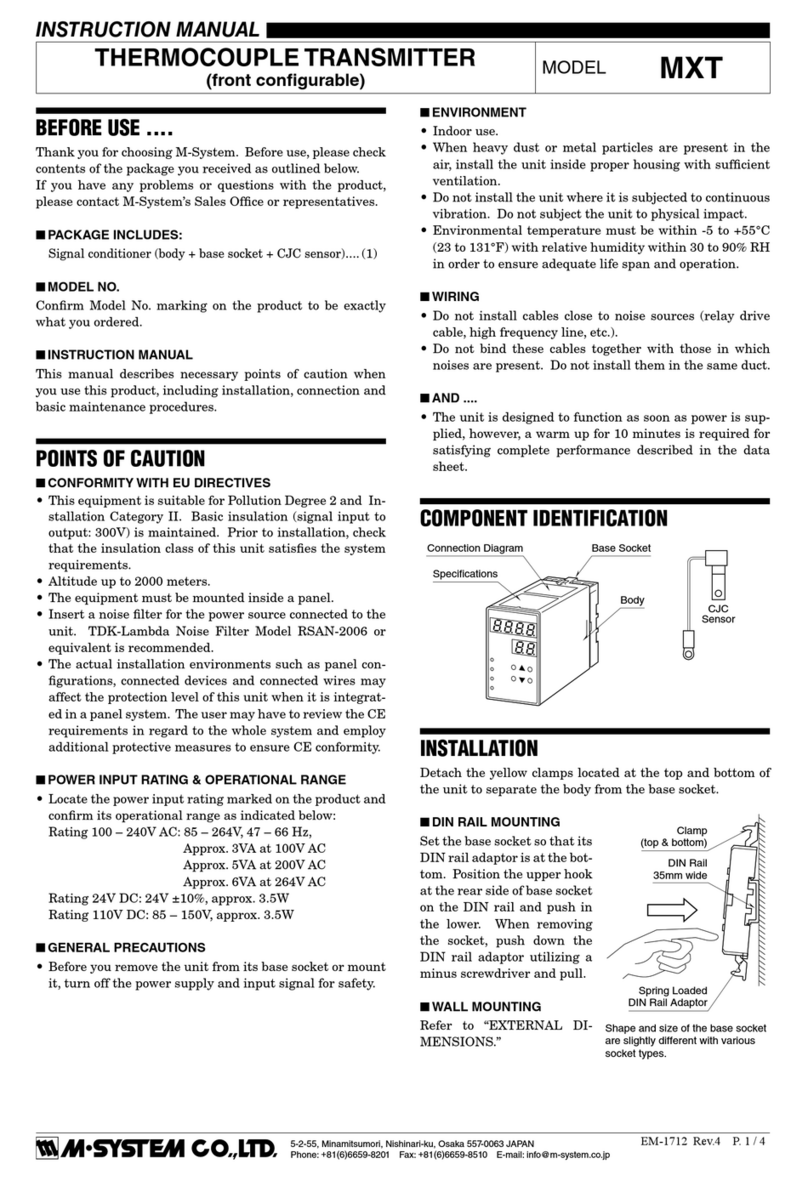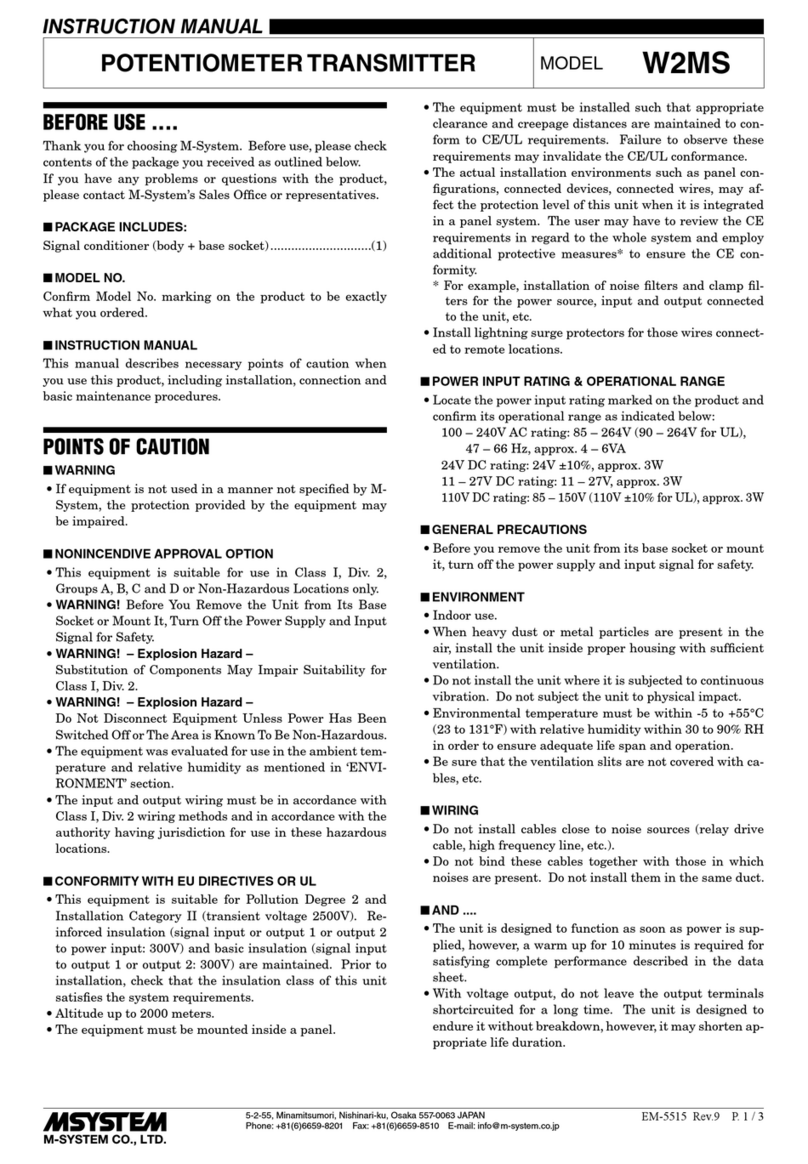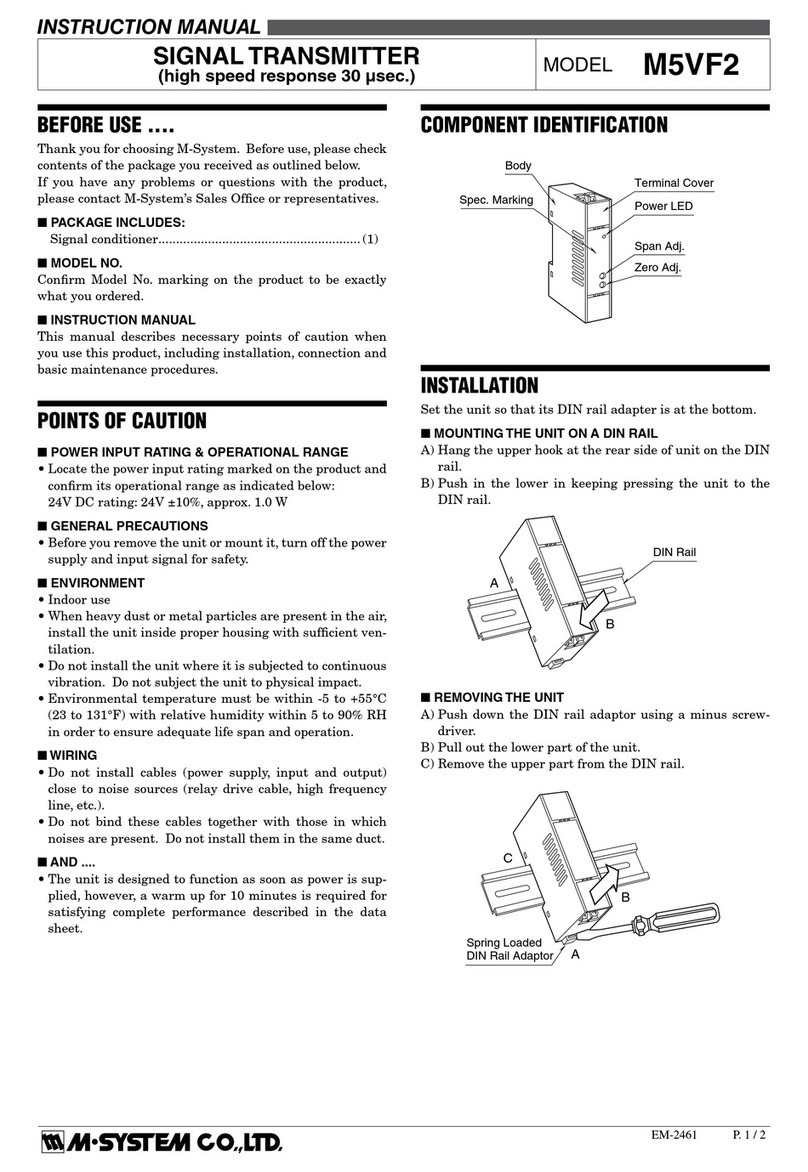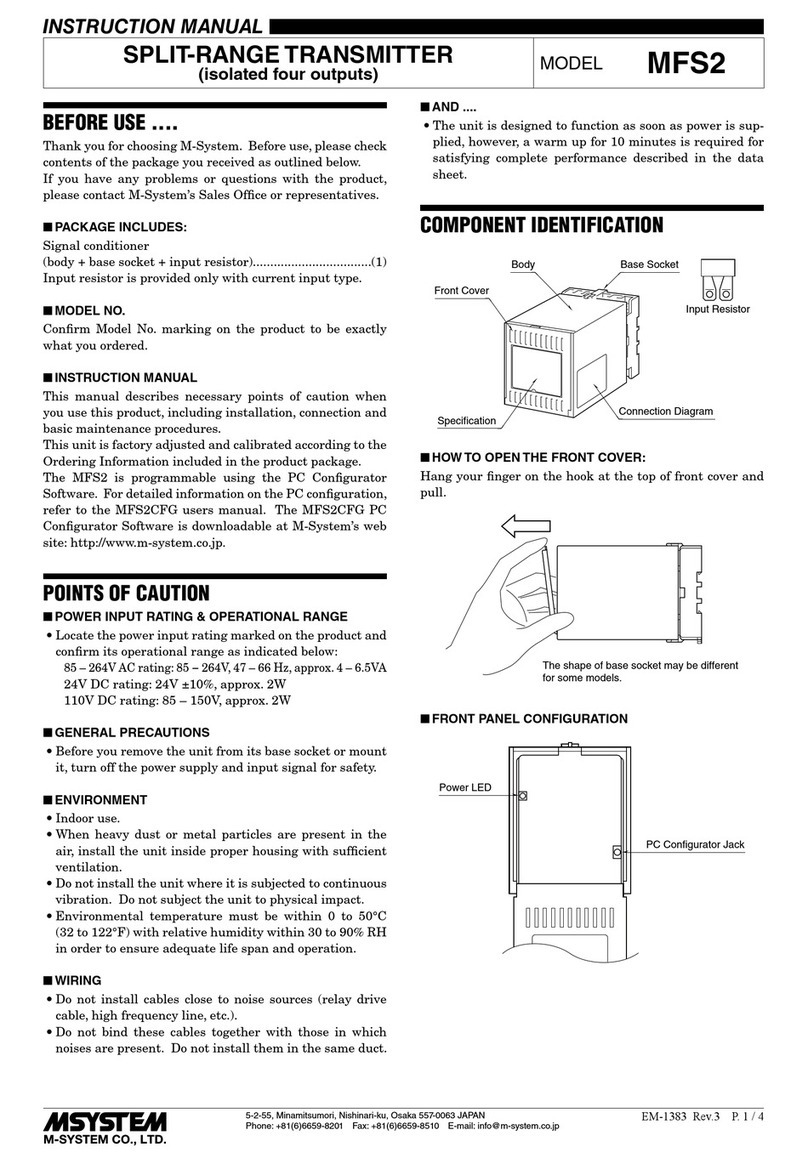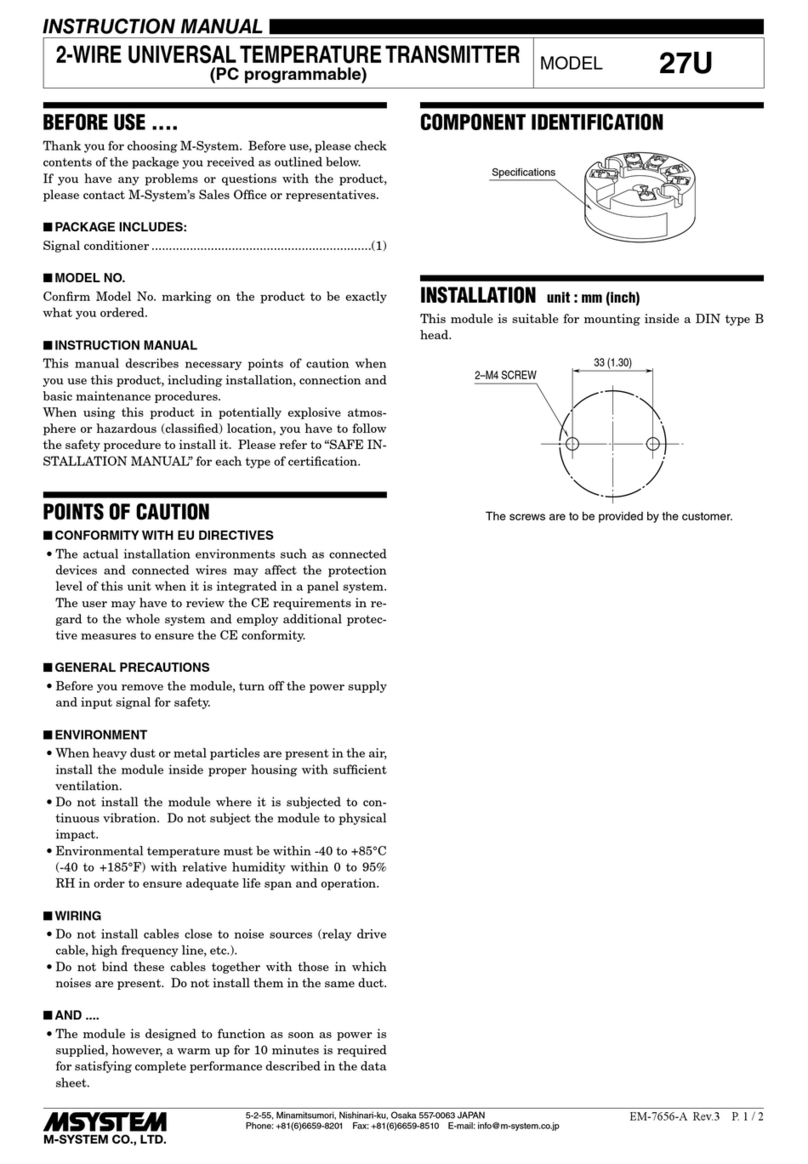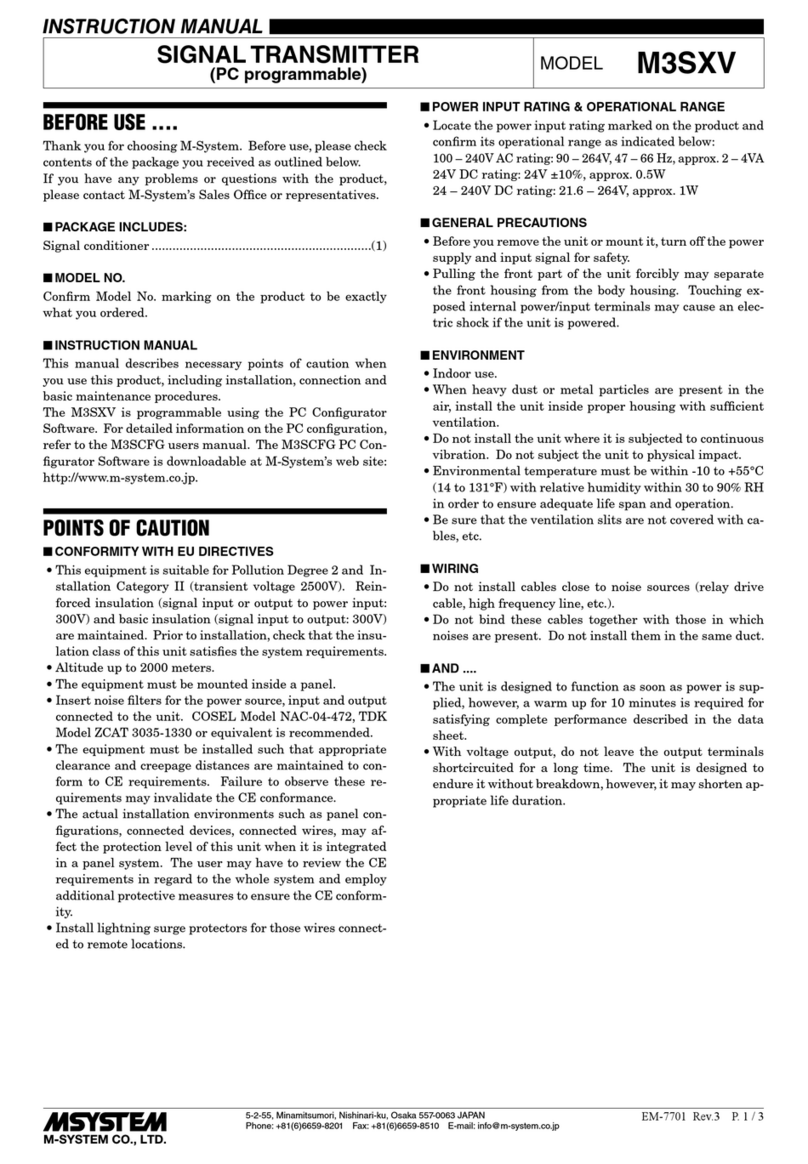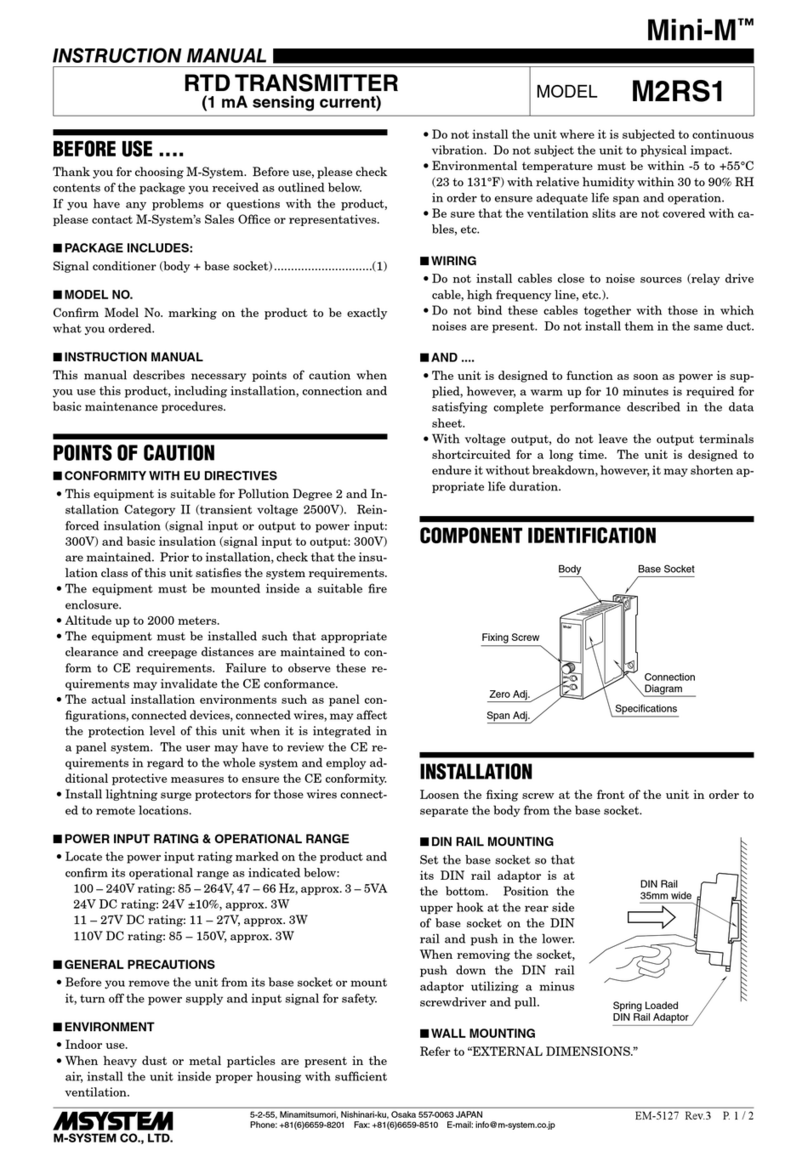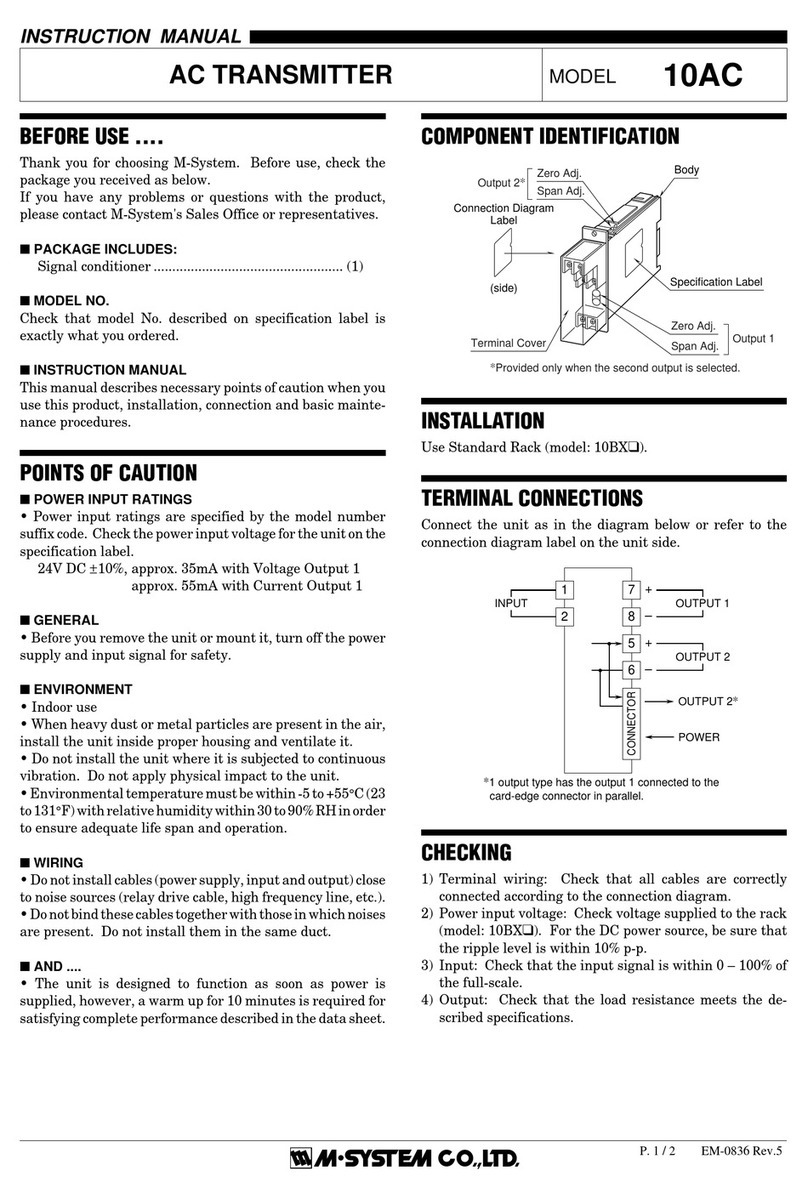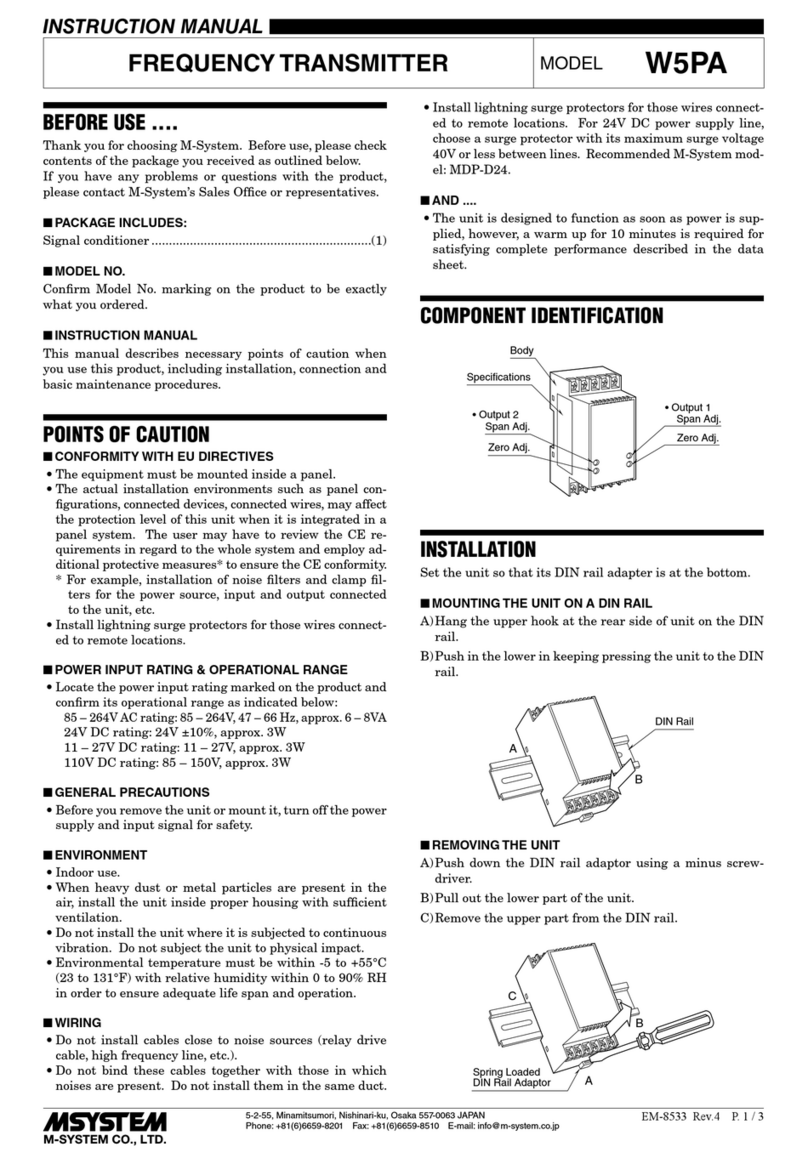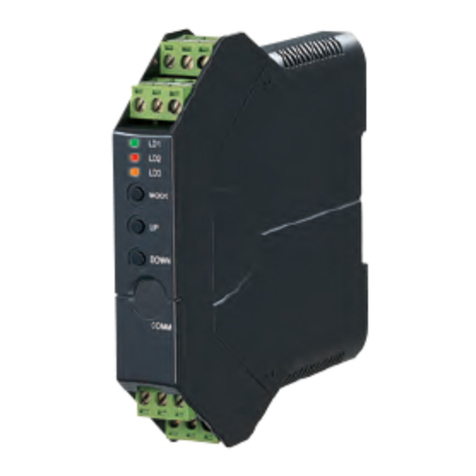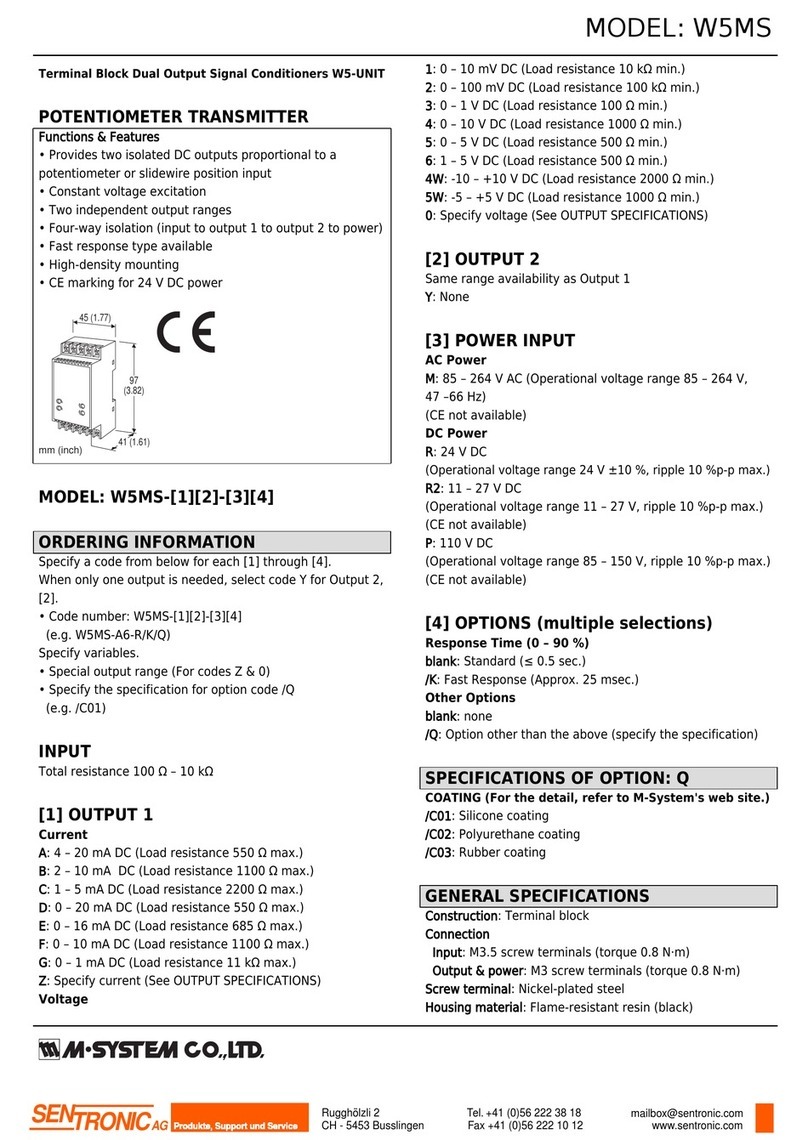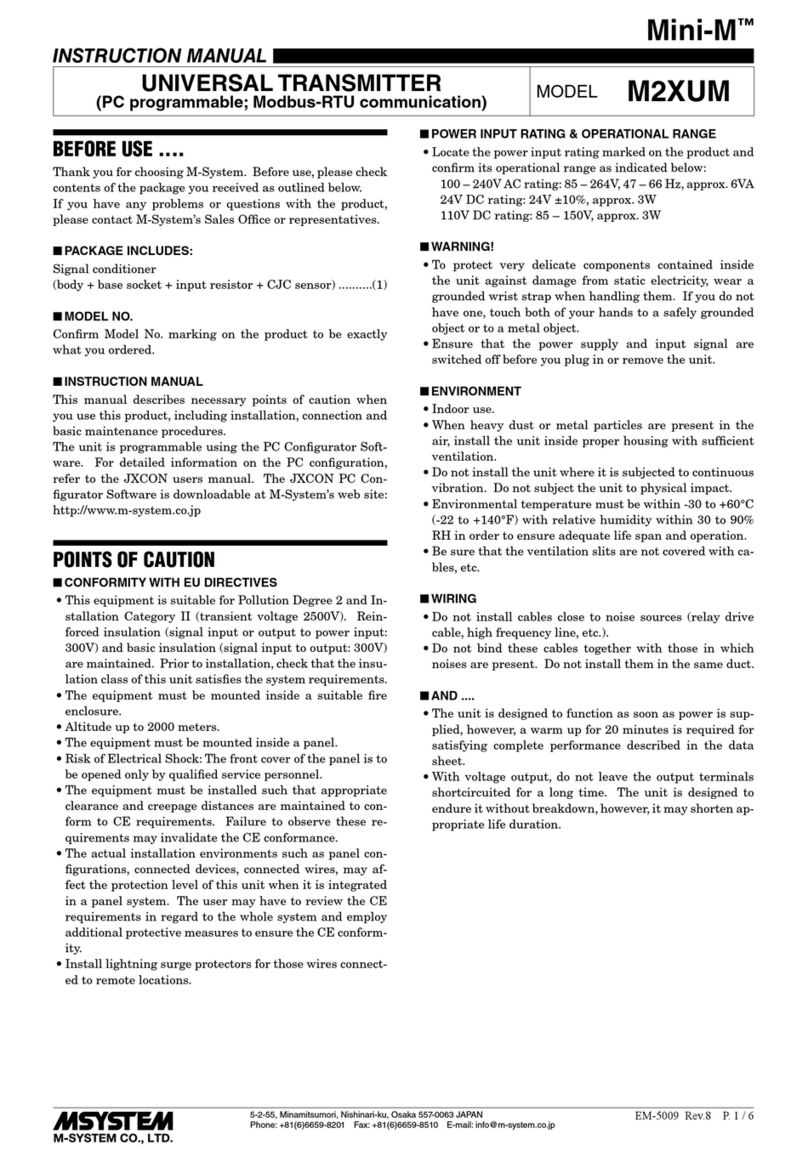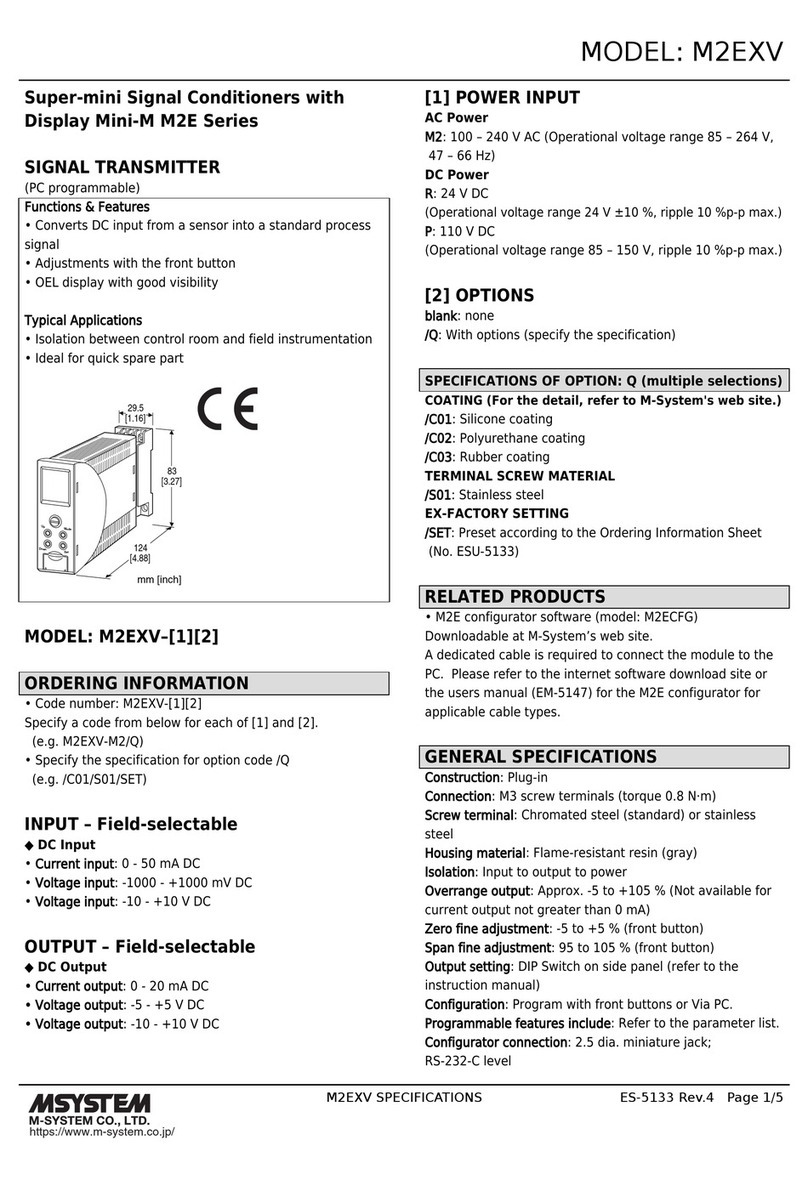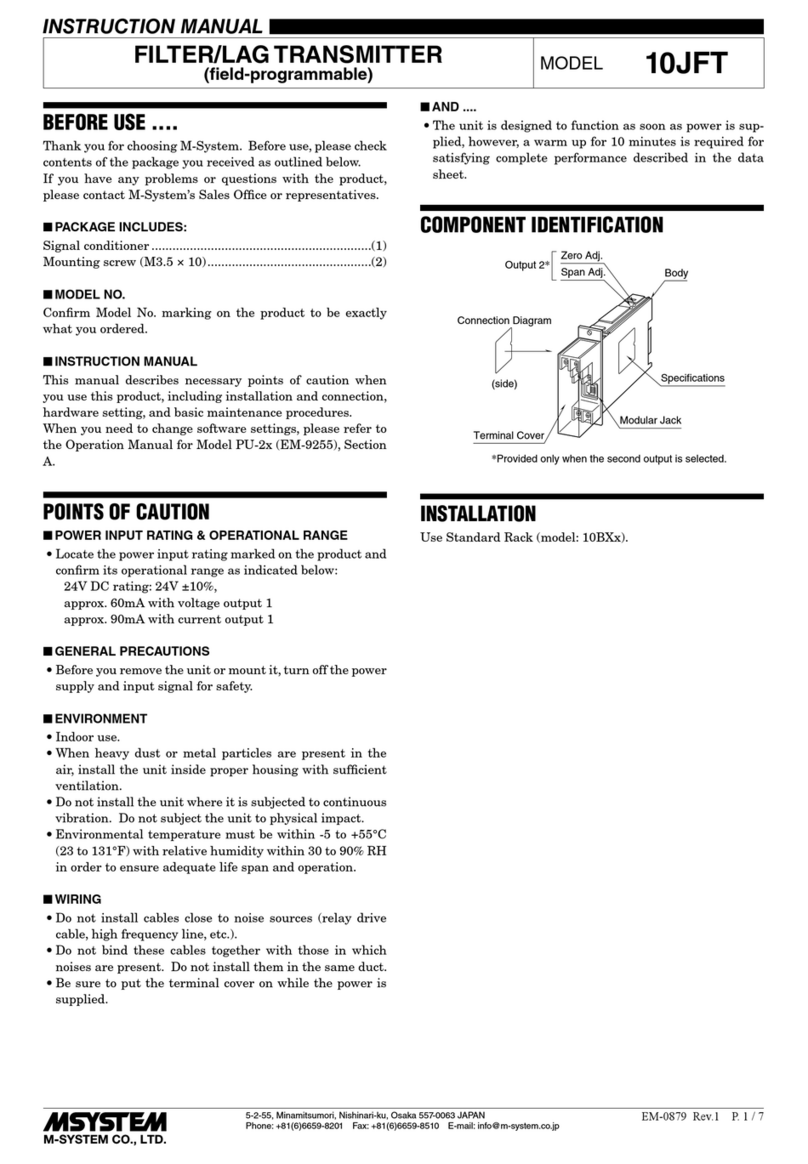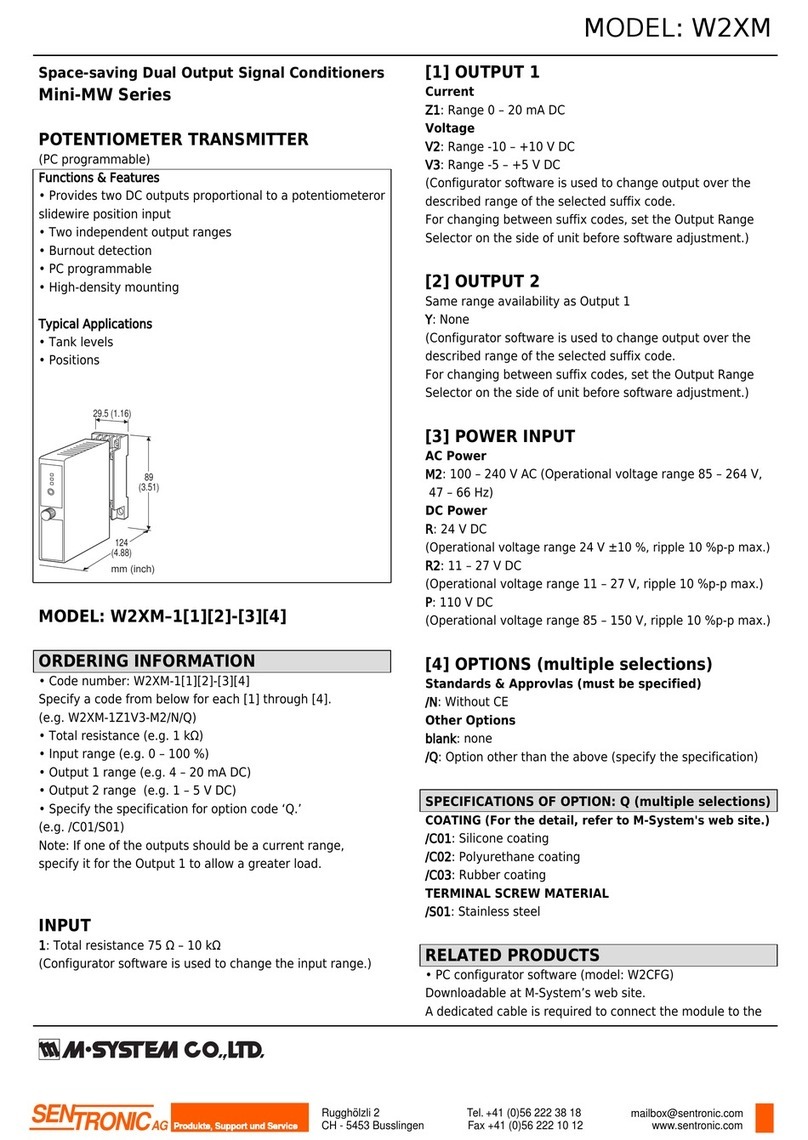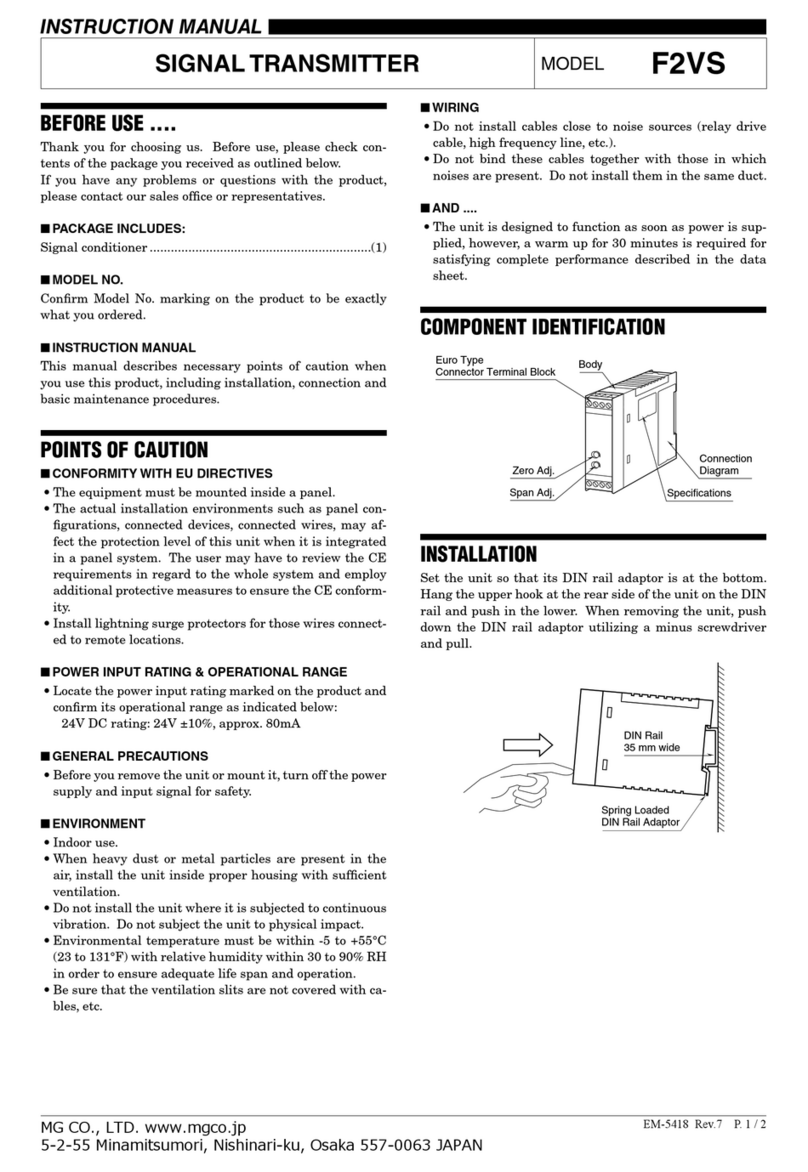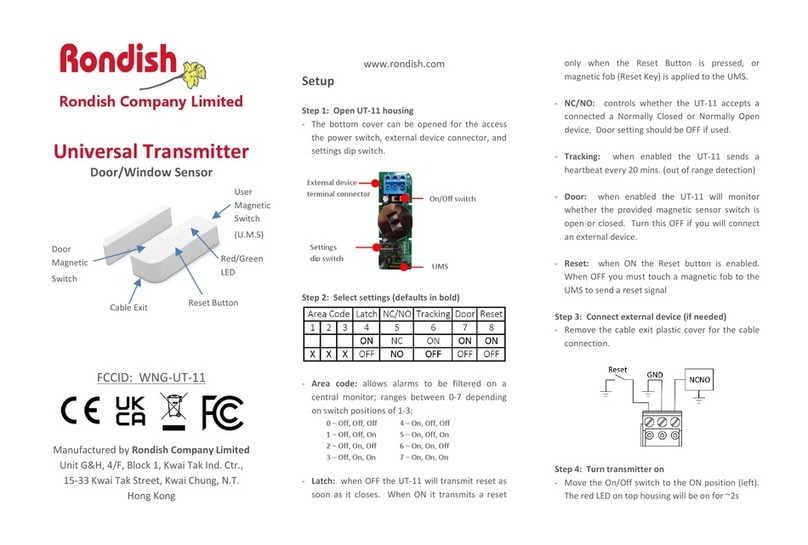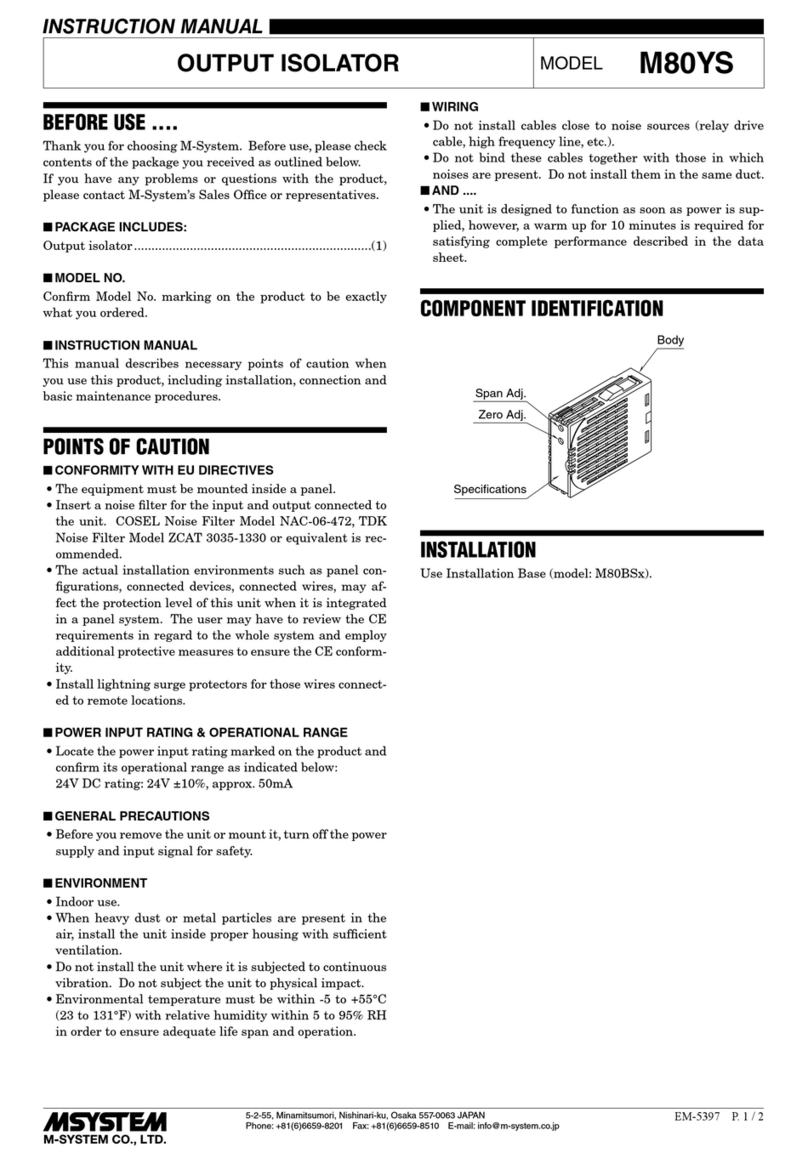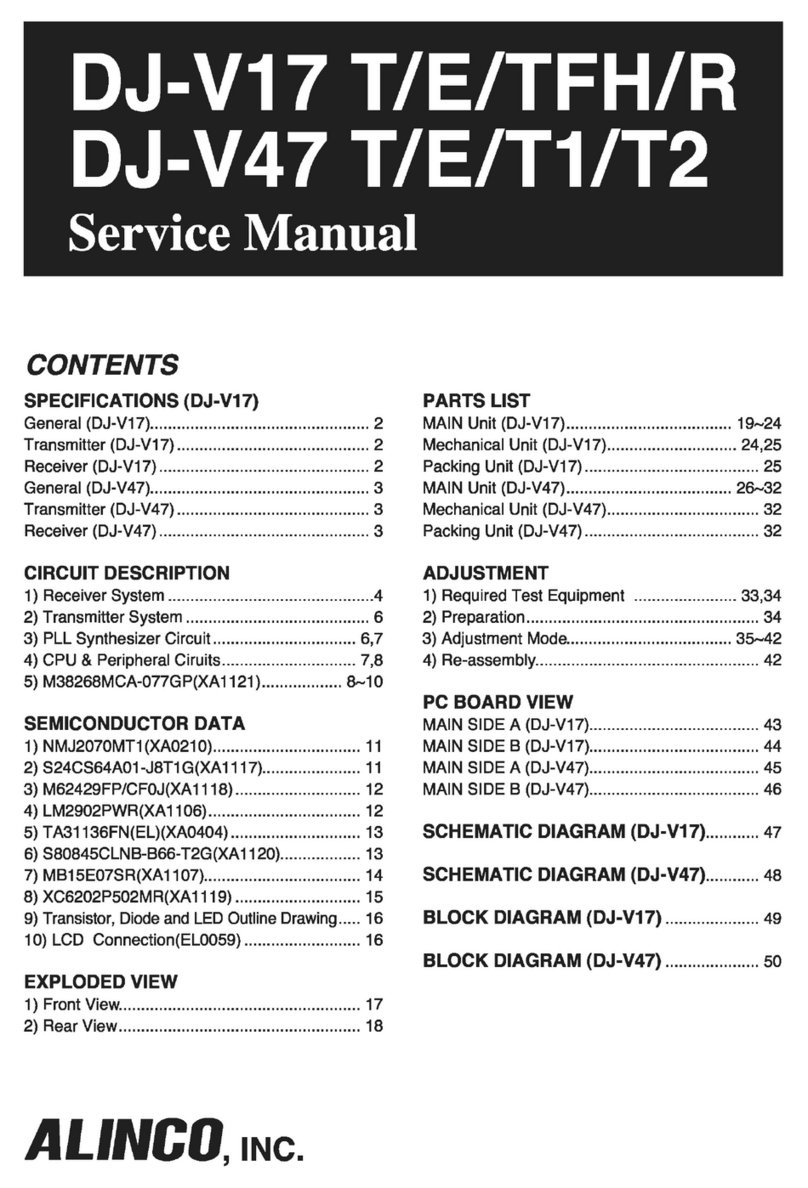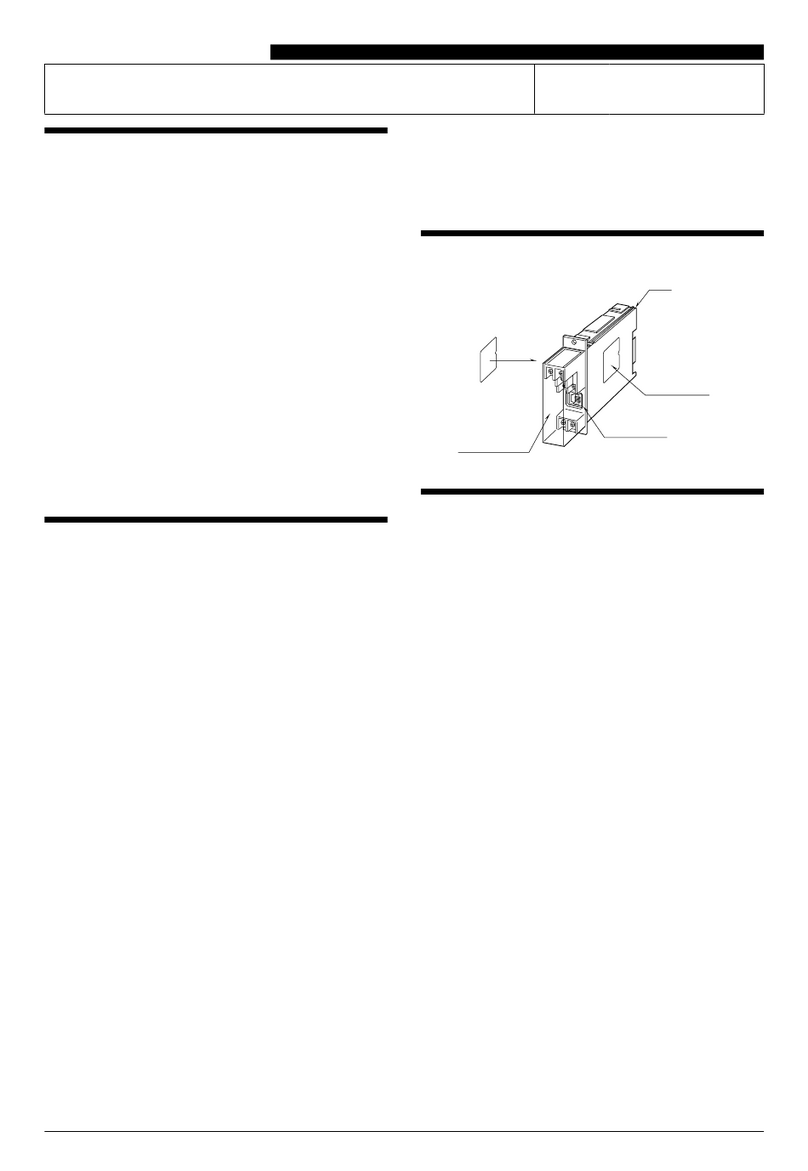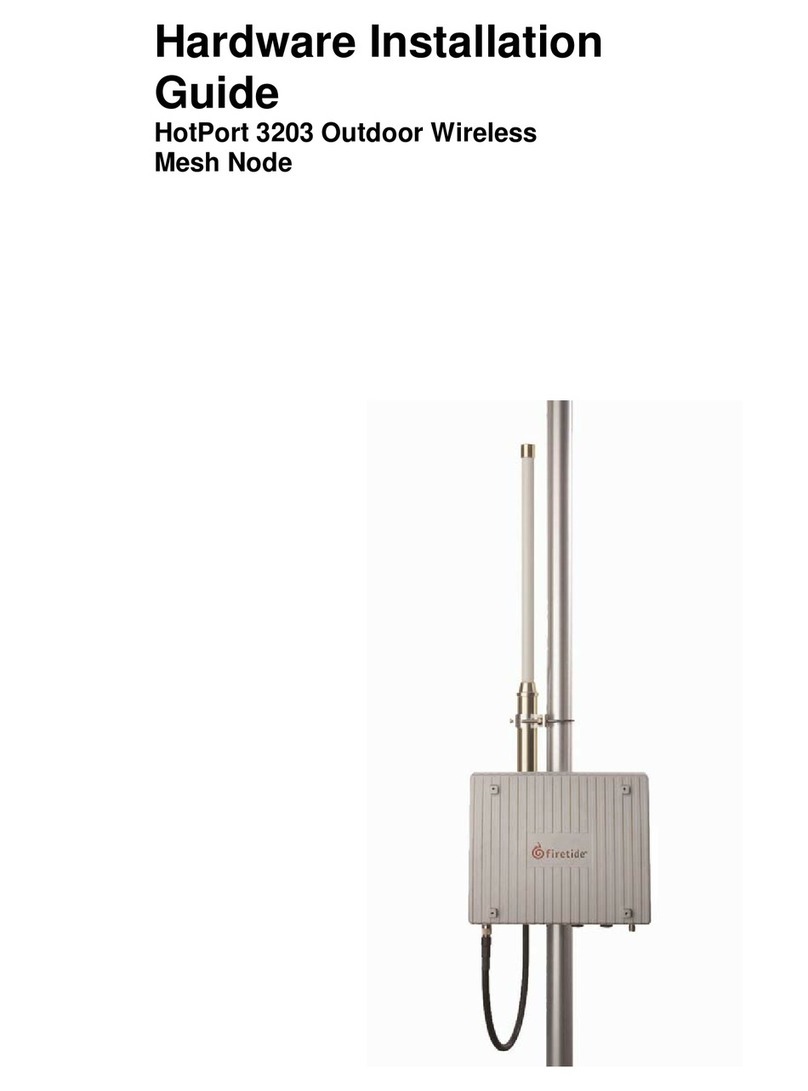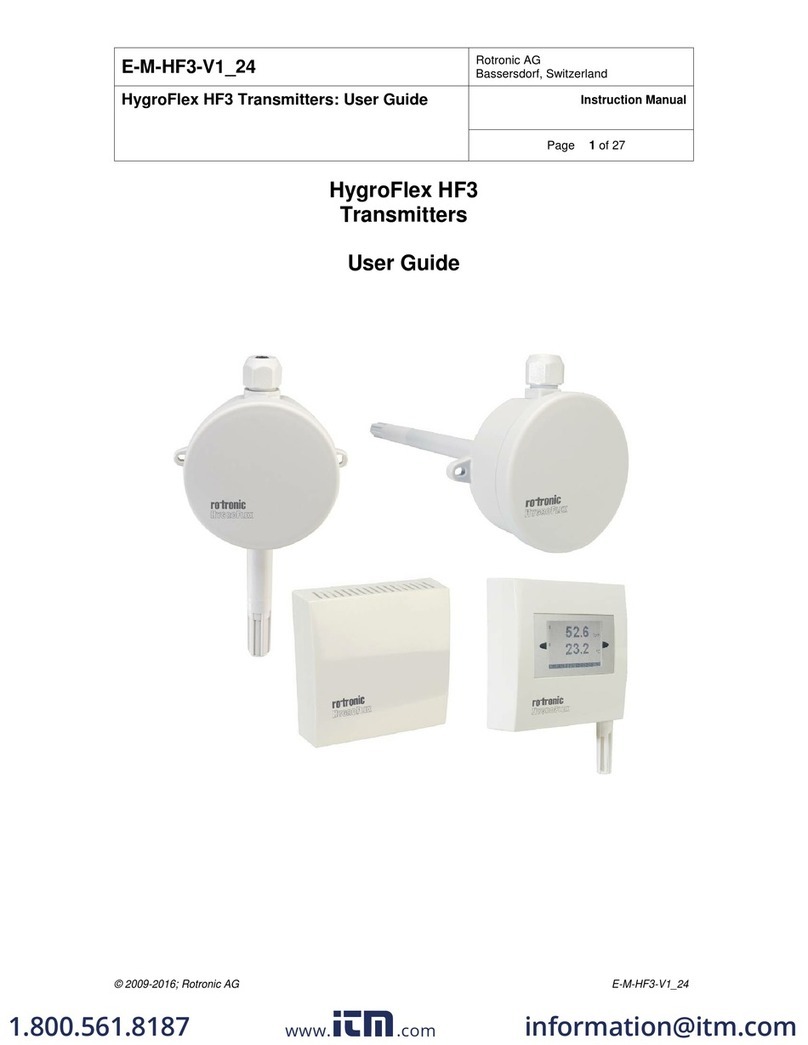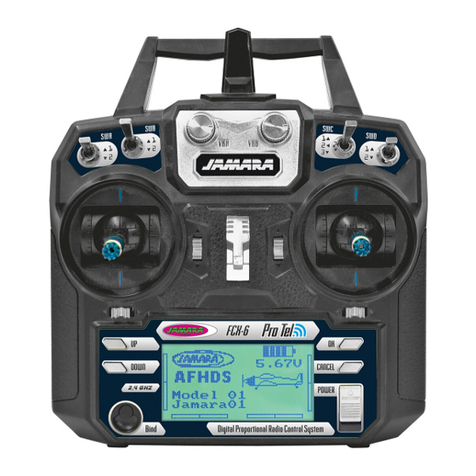
5-2-55, Minamitsumori, Nishinari-ku, Osaka 557-0063 JAPAN
Phone: +81(6)6659-8201 Fax: +81(6)6659-8510 E-mail: info@m-system.co.jp
EM-7513 Rev.8 P. 1 / 5
INSTRUCTION MANUAL
SIGNAL TRANSMITTER
(eld-congurable) MODEL B3FV
BEFORE USE ....
Thank you for choosing M-System. Before use, please check
contents of the package you received as outlined below.
If you have any problems or questions with the product,
please contact M-System’s Sales Office or representatives.
■PACKAGE INCLUDES:
Signal conditioner ...............................................................(1)
■MODEL NO.
Confirm Model No. marking on the product to be exactly
what you ordered.
■INSTRUCTION MANUAL
This manual describes necessary points of caution when
you use this product, including installation, connection and
basic maintenance procedures.
POINTS OF CAUTION
■CONFORMITY WITH UL
•This equipment is suitable for use in a Pollution Degree
2 environment.
•This equipment is to be used with the maximum operat-
ing voltage 30 V rms and 42.4 V peak or 60 V DC.
•The equipment must be mounted inside a suitable fire
enclosure.
•Operating temperature: -40 to +55°C (-40 to +131°F)
•Altitude up to 2000 meters.
■CONFORMITY WITH EU DIRECTIVES
•Functional insulation is maintained between signal input
and output.
•The input voltage across the terminals must be 70 V or
less.
•The equipment must be mounted inside a panel.
•The actual installation environments such as panel con-
figurations, connected devices, connected wires, may af-
fect the protection level of this unit when it is integrated
in a panel system. The user may have to review the CE
requirements in regard to the whole system and employ
additional protective measures to ensure the CE conform-
ity.
•Install lightning surge protectors for those wires connect-
ed to remote locations.
■GENERAL PRECAUTION
•Before you remove the unit or mount it, turn off the power
supply and input signal for safety.
■ENVIRONMENT
•Indoor use.
•When heavy dust or metal particles are present in the
air, install the unit inside proper housing with sufficient
ventilation.
•Do not install the unit where it is subjected to continuous
vibration. Do not subject the unit to physical impact.
•Environmental temperature must be within -40 to +85°C
(-40 to +185°F) with relative humidity within 0 to 95%
RH in order to ensure adequate life span and operation.
•Be sure that the ventilation slits are not covered with ca-
bles, etc.
■WIRING
•Do not install cables close to noise sources (relay drive
cable, high frequency line, etc.).
•Do not bind these cables together with those in which
noises are present. Do not install them in the same duct.
■AND ....
•The unit is designed to function as soon as power is sup-
plied, however, a warm up for 10 minutes is required for
satisfying complete performance described in the data
sheet.
COMPONENT IDENTIFICATION
Body
SW Configuration
Zero Adj.
Span Adj.
Specifications
(side)
■HOW TO OPEN THE COVER WHEN SETTING DIP SW
Hold at the top and bottom of the unit as shown below and
slide the housing cover gently to open until it hits the latch-
ing inside the unit.
• Housing Cover Fully Opened
Caution: DO NOT PULL beyond where the housing cover is latched.
The plastic housing may be damaged.
